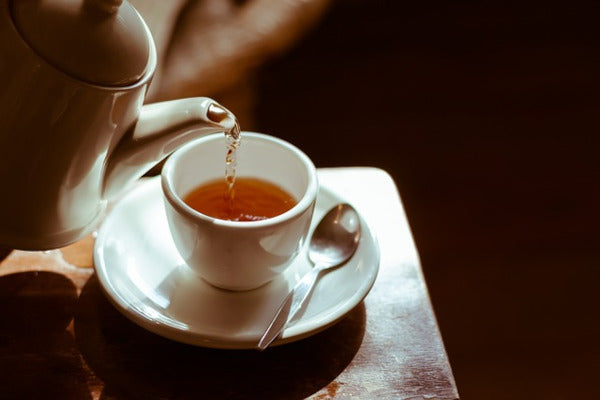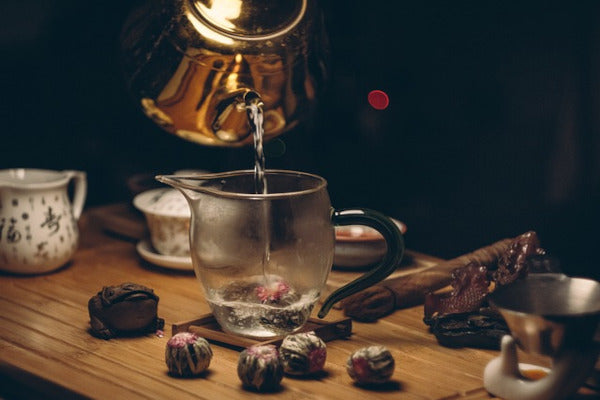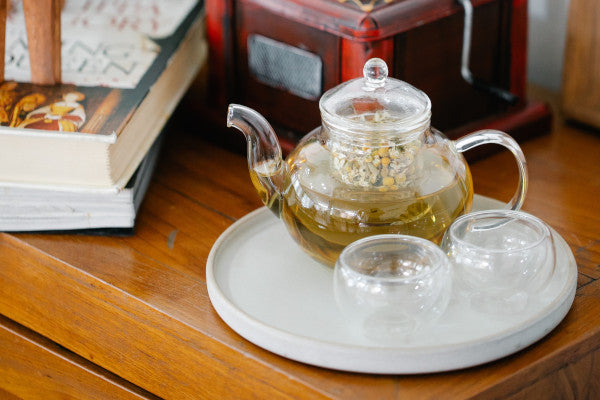Mint has an antispasmodic effect, promoting bile flow. It therefore relieves spasmodic gastrointestinal discomfort. However, this medicinal plant can also be used to treat other ailments. Learn more about mint : effects, uses, and side effects!
What are the medicinal properties of mint?
Mint primarily has an antispasmodic effect and promotes bile flow. This medicinal plant has also been credited with antimicrobial, diuretic, and antiviral effects. These healing properties are primarily derived from the essential oil found in the leaves. The essential oil contains menthol as its main component, as well as menthone, menthol acetate, and other compounds in lower concentrations.
Other important components of mint are flavonoids and tannins, such as rosmarinic acid. Due to its spectrum of action, mint leaves are used to treat spasmodic disorders of the upper digestive tract (including gastritis), bile ducts, and gallbladder. The essential oil (mint oil) is also recommended for irritable bowel syndrome, upper respiratory catarrh, inflammation of the oral mucosa, and muscle and nerve pain. It is particularly effective against tension headaches.

How do you use mint?
Benefits of mint tea as an old-fashioned remedy. Fresh or dried mint leaves are suitable for preparing infusions: pour 1.5 to 3 grams of chopped leaves (1 tablespoon = about 1.5 grams) into 150 milliliters of hot, but not boiling, water. Let the covered infusion steep for five to ten minutes before straining the plant parts. You can drink a cup of mint tea up to three times a day. However, a daily dose of three to six grams of mint leaves should not be exceeded.
The same daily dosage applies to children ten years and older and adolescents. For children between four and nine years old, a maximum of three to five grams of mint leaves per day is recommended, and for children between one and three years old, a maximum of one to three grams. During the first year of life, mint infusion should be given in even lower doses. Better yet, for safety reasons, mint tea should not be given to children.
Mint can be combined with other herbs to make a tea. For example, for spasmodic digestive disorders and bloating, you should add chamomile and ginger, fennel, and/or caraway to the benefits of mint tea . You should also learn about the benefits of mint and spearmint tea. And try the wonderful benefits of mint tea with lemon for colds, for example.

Mint in aromatherapy
These following formulas are for completely healthy adults. For children, pregnant or breastfeeding women, the elderly, and people with certain underlying conditions (such as asthma or epilepsy), it is often necessary to reduce the dosage or omit certain essential oils. Therefore, the use of essential oils in these patient groups should first be discussed with an aromatherapist (e.g., a medical doctor or appropriately trained naturopath).
For tension headaches, a massage with peppermint essential oil, which is very refreshing, can be helpful: put one or two drops of essential oil on a handkerchief and rub it on the back of your neck and temples.
A head massage can also be very effective against annoying headaches: spread five drops of peppermint oil on your fingers and rub your scalp several times from the forehead to the nape of the neck. Next, rub an ice cube on the back of your neck, blow cool air with a towel, and blow cold air on your neck with a cold-air dryer. This head massage can quickly relieve headaches. However, due to its stimulating effect, it should not be done before bedtime.
To inhale a cold, put a drop of peppermint oil in a bowl of hot water. Then, place a towel over your head and keep your face open to the rising vapors. Inhale slowly and deeply. Caution: If the vapors are too hot, you can burn yourself.
If a cold is accompanied by a headache, you can prepare an essential oil blend with 10 drops of cypress and five drops each of niaouli, peppermint, and cardamom. Add five drops of this basic blend to 10 milliliters of almond oil. You can then rub this mixture on your forehead, temples, and nose. Cypress essential oil has disinfectant, anti-inflammatory, relaxing, and analgesic properties, among others. Niaouli and cardamom have antibacterial, antiviral, and anti-inflammatory properties, among others .
You can also use the basic blend of peppermint, cypress, niaouli, and cardamom for a complete bath for colds with headaches: pour ten drops of the essential oil blend into a cup of milk and then pour it into the bath water.
Peppermint essential oil is sometimes taken internally, for example, in cases of irritable bowel syndrome. Consult a doctor or experienced naturopath for advice, or purchase a ready-to-use peppermint oil preparation from a pharmacy.

Ready-to-use mint preparations
The effect of peppermint tea depends on the active ingredient content of the leaves used, which can sometimes vary greatly depending on the growing region, variety, and harvest time. Therefore, for medicinal use, ready-to-use peppermint leaf preparations or peppermint oil (available from pharmacies) are most suitable. For example, there are alcoholic and aqueous extracts, liquid extracts, and dry extracts of the medicinal plant. For irritable bowel disorders, gastro-resistant capsules with peppermint oil can be helpful, as they deliver the active ingredients in high concentrations directly to the target area (the intestine).
To know exactly how to use and dose mint preparations, please refer to the package leaflet or ask your pharmacist for advice.
What side effects can mint cause?
Peppermint infusions are generally well tolerated. However, the health consequences of prolonged and/or high-dose consumption are unknown. People with sensitive stomachs sometimes react to the internal use of peppermint or its preparations with stomach upset.
External use of peppermint oil can cause skin irritation and eczema.
Inhalation of peppermint oil may irritate the respiratory tract of sensitive individuals.
What to keep in mind when using mint
The following rule applies to all essential oils: Use only 100% pure essential oils, preferably those obtained from organically grown or naturally harvested plants.
Before using peppermint oil (and other essential oils), it's always a good idea to test compatibility with the arm flex test: place a drop of essential oil in the crook of your arm and rub gently. If, after a few hours, the area becomes red, itchy, or even pustules form, it means the oil is intolerant. Do not use it in this case.
Peppermint essential oil should not be applied to the face and chest of infants or young children, as it can cause glottis spasm, leading to breathing difficulties, which can be life-threatening. Infants and young children should also not ingest the oil. In general, the use of essential oils (internal and external) on children should always be discussed with a doctor.
People suffering from chronic gallstones, gallbladder inflammation, bile duct obstruction, or liver disease should not use peppermint internally or only after consulting a physician.
Some liquid mint preparations contain alcohol. They should not be consumed continuously. These alcoholic extracts are not suitable for children or alcoholics.
Before using peppermint preparations (such as peppermint oil capsules), ask your pharmacist about possible interactions with other medications. For example, if antacids are taken for acid-related stomach disorders (such as heartburn), they can cause the peppermint oil capsule shell to dissolve prematurely in the stomach. The essential oil can then irritate the gastric mucosa and cause problems such as heartburn.

How are mint and its products obtained?
Ready-to-use mint preparations, dosed exactly according to the pharmacopoeia, as well as dried leaves for infusions and essential oil, are available in all pharmacies. Various preparations (mint tea, oil, etc.) are also available in pharmacies. Consult the relevant package leaflet and ask your doctor or pharmacist how to use and dose the preparations correctly (for example, for children or during pregnancy and breastfeeding).
What you need to know about mint
Mint (M. x piperita) belongs to the Lamiaceae family. It probably emerged spontaneously in the late 17th century as a cross between Mentha spicata (spearmint) and M. aquatica (water mint). Due to its importance as an aromatic and medicinal plant, it has been cultivated in many countries and, as a result of cultivation, exists today in different subspecies, varieties, and forms. They all have in common a quadrangular stem, crossed leaves, and false whorls of flowers. Mint is sterile and reproduces vegetatively by air.
Rubbing mint leaves between your fingers releases the essential oil stored in the glands (peppermint oil, M. piperitae aetheroluem). It gives off the typical, intense mint aroma. The leaves have a slightly spicy flavor, hence the name "mint" (from the Latin piperita, meaning pepper).
Now you know the benefits of mint tea at night and during the day. Try it for a while and let us know.






